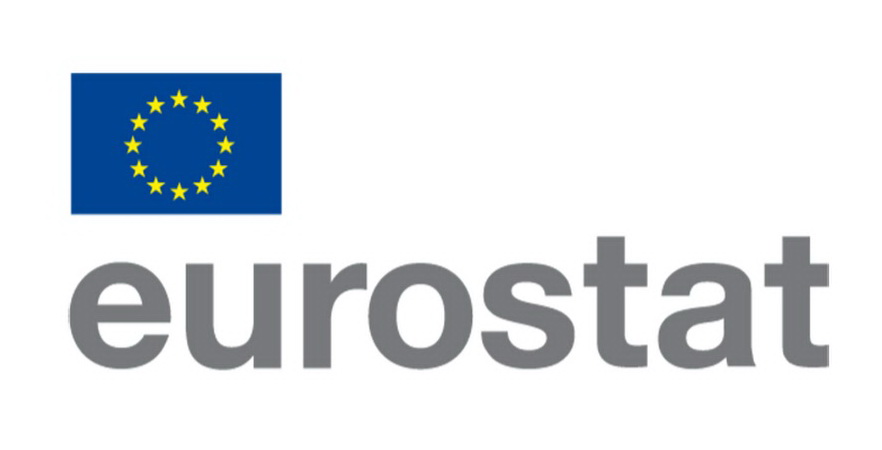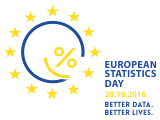| Category: | Economic statistics |
| Area: | Agriculture and fishing |
| Survey / data collection: | Survey on actual yield of late-season crops, fruit and grapes |
| MONSTAT metadata |
|---|
| Reference metadata |
| 1. Contact |
| 2. Metadata update |
| 3. Statistical presentation |
| 4. Unit of measure |
| 5. Reference period |
| 6. Institutional mandate |
| 7. Confidentiality |
| 8. Release policy |
| 9. Frequency of dissemination |
| 10. Accessibility and clarity |
| 11. Quality management |
| 12. Relevance |
| 13. Accuracy and reliability |
| 14. Timeliness and punctuality |
| 15. Coherence and Comparability |
| 17. Data revision |
| 18. Statistical processing |
| 19. Comment |
Note: For any question on metadata, please contact MONSTAT metadata support.
| 1. Contact Vrh | |
| 1.1. Contact organization: | Statistical Office of Montenegro - MONSTAT |
| 1.2. Contact organization unit: | Department of Agricultural Statistics |
| 1.2. Contact organization unit: | IV Proleterske 2, 81000 Podgorica, Montenegro |
| 2. Metadata update Top | |
| 2.1. Metadata last certified: | |
| 2.2. Metadata last posted: | 29 December 2023 |
| 2.3. Metadata last update: | 15 August 2022 |
| 3. Statistical presentation Top | |
| 3.1. Data description: | The aim of the survey is to collect data on harvested areas and realized production of crops, vegetables, fruits, and grapes. |
| 3.2. Classification system: | NACE Rev. 2 |
| 3.3. Sector coverage: | Section A - Agriculture, forestry and fishing |
| 3.4. Statistical concepts and definitions: | Utilised agricultural land covers arable land, kitchen gardens and/or gardens, orchards, vineyards, nurseries, meadows and pastures, regardless of the type of ownership (land owned or land taken in tenure). Arable lands are areas of land that are regularly processed and crops are sown/planted according to certain order (crop rotation). Crop rotation represents regular and predetermined replacement of crops (rotation system) for more efficient use of land. On arable land are cultivated grains, industrial crops, potato, roughage, vegetable plants, flowers, seeds and seedlings and other plants on arable land. Kitchen gardens and/or gardens are areas devoted for growing crops (vegetables, potatoes, fruit and vine) intended for feeding of the holding members and are mainly not intended for sale. Only occasional excess of products from these areas is sold outside the holding. Plantation orchards are areas under the fruit trees, with certain spacing between lines and rows. Mechanical processing can be carried out in them, and by rule are carried out other agro-technical measures. Usually these are the larger plantings of fruit trees and berry fruit (raspberry, blackberry, blackcurrant, blueberry), intended mainly for sale. Extensive orchards are semi-intensive or extensive fruit crops intended mostly for own consumption. Vineyards - plantations of vine intended for the production of grapes. Plantation vineyards - areas under vine with certain distance between the vines, in which can be performed mechanized processing, and by a rule are conducted other agro-technical measures. Nurseries are areas of land on which are grown young woody plants intended for transplantation later, and include: fruit seedlings, grapevine seedlings, decorative plants and forest trees. Meadows - land that is permanently (five or more years) used to grow green animal feed, and is not included in crop rotation. The meadows can be seeded or wild growing. Pastures - land that is used for grazing of livestock. Sown/planted areas are areas that are processed and sown with certain crops. Harvested area is the area from which crops are harvested and yield was realized. The realized production is a total yield that is obtained at the end of harvest/vintage, or yield that is stored and reduced in amounts lost before the harvest, during the harvest, transport. |
| 3.5. Statistical unit: | Agricultural enterprises, cooperatives and private agricultural holdings engaged in crop production. |
| 3.6. Statistical population: | Agricultural holdings engaged in crop production. |
| 3.7. Reference area: | Montenegro |
| 3.8. Time coverage: | Statistical data on areas of agricultural land, area and production of crops collected since the 60s of the last century. Until 2013, the used method was based on the reports of agricultural enterprises and cooperatives and the estimated for the private agricultural holdings. Since 2014, instead of the surveys based on the estimates, were introduced regular annual sample-based surveys. In order to obtain comparable data for the period from 2007 -2013 completed the recalculation of data on agricultural land and crop production. |
| 3.9. Base period: | Not relevant. |
| 4. Unit of measure Top | |
| Data on the areas are collected in hectares (ha) and square meters (m2), and data on the production are collected in kilograms (kg). | |
| 5. Reference period Top | |
| Agricultural year. | |
| 6. Institutional mandate Top | |
| 6.1. Legal acts and other agreements: | The Law on Official Statistics and Official Statistical System (Official Gazette of Montenegro No 18/12, 47/19) defines provisions for collection, processing, and dissemination of data. The Law provides to the Statistical Office legal powers to collect and access the data necessary for the implementation of Programme and Annual Plan. The Law gives a priority to the use of administrative data and right of access to individual data that are a result of survey of other official statistical producers. As an annex to legal provisions, Statistical Office has signed several memoranda on cooperation with administrative data providers. |
| 6.2. Data sharing: | Signed agreement on cooperation with the official statistical producers: 1. Customs Administration 2. Tax Administration 3. Ministry of Finance 4. Central Bank of Montenegro 5. Trilateral agreement (MONSTAT, Ministry of Finance, and Central Bank of Montenegro) International institutions: 1. EUROSTAT 2. UN organizations 3. IMF 4. World Bank |
| 7. Confidentiality Top | |
| 7.1. Confidentiality - policy: | Articles 53-60 of the Law on Official Statistics and Official Statistical System (Official Gazette of Montenegro No 18/12, 47/19) provide a framework for protection, use, and transmission of confidential data. MONSTAT has produced two comprehensive rulebooks that cover the procedures for individual data protection as well as keeping individual records. With purpose of the meeting legal framework on functioning of security system and statistical confidentiality there was adopted the Rulebook on Keeping Statistical Data by which Manner, Time, Technical Conditions and Organization of Statistical Data Storage to Prevent Their Destroying, Misappropriation, and Unauthorized Use is Regulated as well as the Rulebook on Contents and Manner of Keeping Records on Users of Individual Statistical Data by which contents and manner of keeping records on users of individual statistical data is regular. Pursuant to the Article 59, an access to the confidential data is limited to persons performing duties and tasks of official statistical producer and up to the stage the data are necessary for official statistical production. Persons that performs duties and tasks within official statistical producers must sign the statement on respecting the principle of confidentiality. Law on Official Statistics and Official Statistical System is aligned with the Regulation No 223/2009 and the Regulation (EU) 2015/759 from 29 April 2015 that also regulate confidentiality provisions. The Government of Montenegro adopted the Statement on Commitment of Confidence in Official Statistics (Commitment of Confidence). |
| 7.2. Confidentiality - data treatment: | According to Article 56 of the Law on Official Statistics and Official Statistical System, individual data on natural or legal persons shall be confidential and represent official secret. According to Article 57, confidential data will used only for statistical purposes and will be expressed in aggregate form. |
| 8. Release policy Top | |
| 8.1. Release calendar: | The Law on Official Statistics and Official Statistical System (Official Gazette of Montenegro No 18/12, 47/19) stipulates that official statistical producers prepare, update, and publish Statistical Release Calendar. It is published on the website of Statistical Office not later than 20 December for the next year, for all official statistical producers that includes date of releasing statistical data. Any change in date of releasing in the Calendar is published in advance in accordance with the Procedure on Unplanned Revisions. |
| 8.2. Release calendar - access: | http://www.monstat.org/eng/page.php?id=12&pageid=12 |
| 8.3. User access: | General aim of official statistical producer is to meet the needs of users, and to make an access to statistical data to users in an understandable manner, simultaneously and under the same conditions. Statistical Office is obliged to produce and disseminate official statistics in objective, transparent and professional manner, so that all users are equally treated. |
| 9. Frequency of dissemination Top | |
| Frequency of dissemination data is annual. The data are transmitted to Eurostat annually. | |
| 10. Accessibility and clarity Top | |
| 10.1. News release: | Release for Survey on actual yield of late-season crops, fruit, and grapes is published annually according to the Statistical Release Calendar of Statistical Office: http://monstat.org/eng/page.php?id=1357&pageid=62 |
| 10.2. Publications: | Statistical Office publishes the following regular publications: 1. Statistical Yearbook, 2. Montenegro in figures, 3. Monthly statistical review. In addition to the above regular ones, Statistical Office publishes also additionally publications. Some of the most important additional publications are as it follows: 1. Women and Men in Montenegro, 2. The most often used statistical data. All publication published by Statistical Office are available at the following link: http://monstat.org/eng/publikacije.php |
| 10.3. Online database: | Online database is available on the link: http://bazapodataka.monstat.org/PXWebEng/pxweb/en/Agriculture%20and%20fishing/?rxid=2d548a59-55b6-49b2-b591-e038baaf0479 |
| 10.4. Micro-data access: | The Law on Official Statistics and Official Statistical System (Official Gazette of Montenegro No 18/12, 47/19) regulates rules under which external users can obtain an access to individual data for needs of research. Article 58 defines types of scientific and research organizations that can obtain such data. Providing individual data without identifier is possible only upon a written request of scientific and research institutions, with purpose of performing scientific and research activities as well as international statistical organizations and statistical producers from other countries. Research entity signs the agreement with Statistical Office, and it signs the statement on respecting the confidentiality principle. Official statistical producers keeps a separate records on users and purpose of using the statistical data given to these users. |
| 10.5. Other: | Data obtained by survey on actual yields of late-season crops, fruit and grapes are also published on the website of Statistical Office of Montenegro in the form of an excel table: http://monstat.org/eng/page.php?id=62&pageid=62 |
| 10.6. Documentation on methodology: domain: | Methodological guidelines for the survey on actual yield of late-season crops, fruit and grapes is available on the link: http://monstat.org/eng/page.php?id=1271&pageid=62 |
| 10.7. Quality documentation: | The Law on Official Statistics and the Official Statistical System ("Official Gazette of Montenegro" No. 18/12 and 47/19) defines the commitment to quality, which ensures that producers of official statistics in Montenegro work and cooperate in accordance with international principles of quality of the statistical system. In accordance with the ESS Quality Declaration, Article 338 of the Treaty on the Functioning of the EU, Regulations 759/2015 and 223/2009 and the European Statistics Code of Practice, the following documents are adopted: 1. Quality Strategy of the Statistical Office 2. Guide for the implementation of the Quality Strategy in the Statistical Office; 3. Implementation plan |
| 11. Quality management Top | |
| 11.1. Quality assurance: | Statistical Office has chosen the implementation of elements of TQM (Total Quality Management) model that foster development and improvement of functioning of: - Institution, - Official statistical result production, and - Individual. Within middle-term deadline, Statistical Office has chosen the TQM implementation through the following objectives: 1. Strong commitment to users and other interested parties, 2. Quality statistical processes and products, 3. Professional orientation of staff members, 4. Constant improvements, 5. Reduction of overburden of reporting units. |
| 11.2. Quality assesment: | Quality is monitored at all stages of data production, by accountable statisticians. Collecting, entering, and processing data are commonly the subject of this monitoring. One of the criteria for checking the data is administrative data sources. Data obtained through this research are checked with data obtained from the Agricultural Census, regular annual statistical surveys. |
| 12. Relevance Top | |
| 12.1. User needs: | International users: - Eurostat, - World Bank, - UN organizations, - International Monetary Fund National users: - Ministries and other public administration bodies, - Local government and other local government bodies, - Central bank, - Non-governmental organizations, - Students, - Researchers, - Media. |
| 12.2. User satisfaction: | The Statistical Office has adopted the Quality Management Strategy, the Guidebook to the Implementation of the Quality Management Strategy, as well as the Plan for the Implementation of the Quality Policy. In order to measure the degree to which fulfills obligations towards users and within the new quality policy, the Statistical Office conducted User satisfaction survey. The results of the survey are available on the Statistical Office website, link: http://monstat.org/uploads/files/2.%20Izvjestaj%20o%20zadovoljstvu%20korisnika%20ENG%20(Autosaved).pdf |
| 12.3. Completeness: | All requested data are produced by this survey. International and national requirements are met. |
| 13. Accuracy and reliability Top | |
| 13.1. Overall accuracy: | The survey on actual yield of late-season crops, fruits, and grapes is carried out on a sample basis and the data is obtained by a interview and reporting method and are subject to common types of errors related to sampling technique, non-sampling errors, processing errors, and non-response. |
| 13.2. Sampling error: | The survey on actual yield of late-season crops, fruits, and grapes is carried out on a sample basis so logically there is an error in random sampling. The coefficient of variation is the relative measure of the accuracy of the data evaluation. In addition to this measure, the lower and upper bounds of confidence intervals are also calculated. |
| 13.3. Non-sampling error: | Non-sampling errors are associated with other errors that aren't connected with sample. Non-sampling errors include: coverage error, measurment error, response error and processing error. |
| 14. Timeliness and punctuality Top | |
| 14.1. Timeliness: | According to the Annual Plan of Statistical Surveys and the Statistical Release Calendar of Statistical Office, data on actual yields of late-season crops, fruit and grapes are published in July of the current year for the previous year. |
| 14.2. Punctuality: | Data was published 1 July 2022 according to the Statistical Release Calendar of Statistical Office. The accuracy indicator represents the time difference between actual data disclosure and planned data disclosure. It can be calculated by the formula: P3 = dact - dsch |
| 15. Coherence and Comparability Top | |
| 15.1. Comparability - geographical: | Not relevant. |
| 15.2. Comparability over time: | The data are fully comparable. Since the 2014, instead surveys based on estimates were introduced regular annual sample-based surveys. In aim of obtaining comparable data for period 2007 - 2013, was made the recalculation of data about agricultural land and crop production. |
| 15.3. Coherence - cross domain: | The methodology is in accordance with recommendations of Eurostat (Regulation of the European Parliament and the Council (EC) No 543/2009). |
| 15.4. Coherence - internal: | Data of survey on actual yield of late-season crops, fruit and grapes are harmonized internally. |
| 17. Data revision Top | |
| 17.1. Data revision - policy: | Statistical Office has adopted the revision policy and it is available on the website: http://www.monstat.org/eng/page.php?id=1411&pageid=1411 |
| 17.2. Data revision - practice: | Preliminary data from the Survey on actual yield of late-season crops, fruit and grapes was published on July 1, 2022. Final data from Survey on actual yield of late-season crops, fruit and grapes for 2021, will be published with the publication of final data on the Farm structure survey in Montenegro. |
| 18. Statistical processing Top | |
| 18.1. Source data: | The survey is carried out by the reporting method for enterprises and cooperatives. Since the 2013, the data for private agriculture holdings are collecting with the method of interviewing on a sample of 5 000 agricultural holdings. |
| 18.2. Frequency of data collection: | Annual. |
| 18.3. Data collection: | Collecting the data for private agriculture holdings is carried out by interviewers, filling the data on printed form of questionnaire. The data for enterprises are collecting by the reporting method. |
| 18.6. Adjustment: | Not relevant. |
| 19. Comment Top | |







